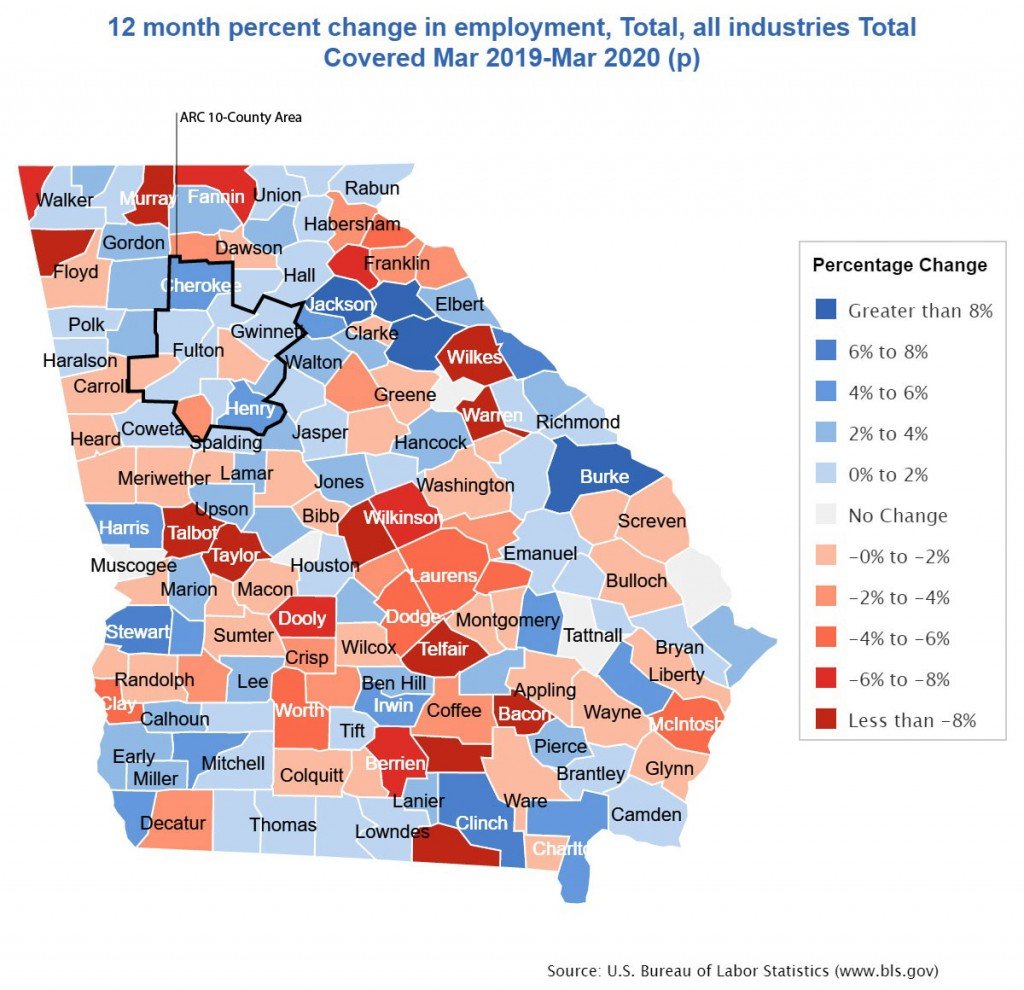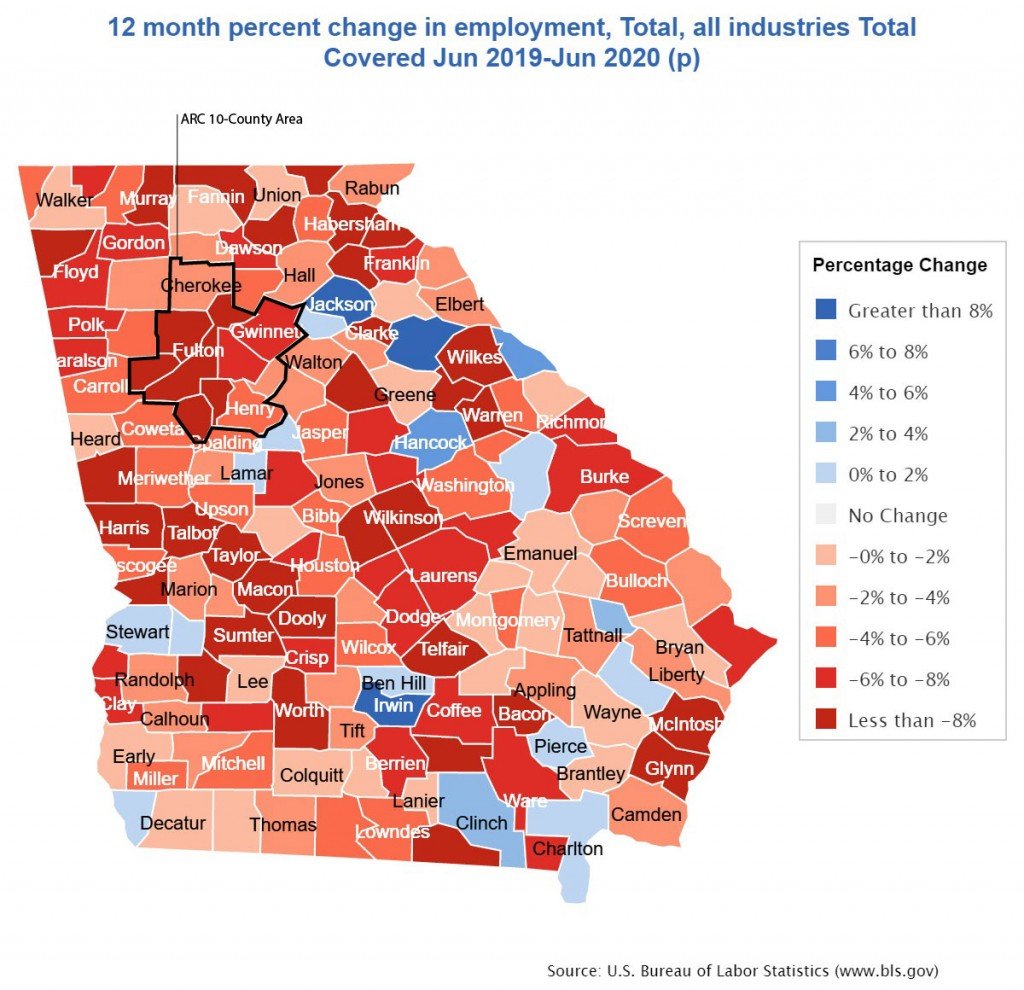As painful it may be, it is still instructive to take a careful look at just how broad the impacts of the pandemic-driven economic downturn have been. In this post, we first assess the change in the employment from 2019 to 2020 will be reviewed at the county level using the QCEW (quarterly census of employment and wages) data from U.S. Bureau of Labor Statistics. Then, using the same source, we look at unemployment rates during 2019 and 2020.
QCEW Map, State and County, Quarters 1 and 2: 2019 and 2020
The initial map below shows the percent change in jobs at the county level between March 2019 and March 2020 (the 1st quarters of each year). Blue represents an increase and red represents a decrease; the darker the color, the bigger the magnitude of gain (or loss). The thick black line surrounds ARC’s 10-county area. This period was pre-pandemic, but there is a clear slowing in job growth, compared to year-to-year periods over the last five years. There’s a rough balance in the number of counties declining or static (77) and the number growing (82), across the state. There is only a net gain of 28,000 jobs statewide.
In the 10-county area, Cherokee had the greatest percent change increase, at 4.4 percent, followed by Henry (4.1 percent) and Rockdale (2.7 percent). Fayette had the largest percent change decrease at -2.1 percent. Percent change in employment in the remaining counties is less than 1 percent.
In Georgia, Burke had the greatest percent change gain at 15.5 percent, while Twiggs had the greatest loss at -33.1 percent during the period (Q1 2019 – Q1 2020)

The map below looks at data comparing the second quarters of 2019 and 2020. By the 2nd quarter of 2020, we were in the throes of the pandemic, and as such there’s not much blue (indicating a gain) on this map. 141 counties in the state lost jobs over the period, with only 15 counties seeing an increase (of only a combined 5,115 jobs). No county in the 10-county area added jobs. Overall, the state lost 291,000 jobs Q2 2019 to Q2 2020, for a 7.2% decline in the job base. And this makes complete, brutal sense, since unemployment rose higher in just the first three months of the pandemic than it did during the Great Recession.
Among ARC’s 10 counties, Clayton had the largest loss at -20.8 percent, which was the fifth greatest loss in the state, primarily driven by loss in leisure and hospitality industry. Fulton followed at -10.7 percent and Douglas at -9.3 percent. Cherokee had the lowest rate of decline, at -2.6 percent.
Statewide, only 18 counties among 159 experienced an employment increases. Irwin had the greatest gain at 17.4 percent. Among the 141 counties that experienced loss of employment, Taliaferro experienced the most significant loss at -48.7 percent.

Monthly unemployment rate in Georgia, January – October 2020
And the pain persists as we move through 2020. The map below shows the monthly unemployment rate from January to October 2020. The darker the color, the higher the unemployment rate. The unemployment rate increased statewide, especially in the 10-county area, beginning in April with the pandemic’s onset. By May, Clayton had the highest unemployment rate in Georgia, at 13.8 percent, and it was second-highest in the state from June to October. Clayton’s unemployment rate before the pandemic (in January and February 2020) was only 4.25 percent.

Monthly 12-month change in unemployment rates in Georgia, January – October 2020


